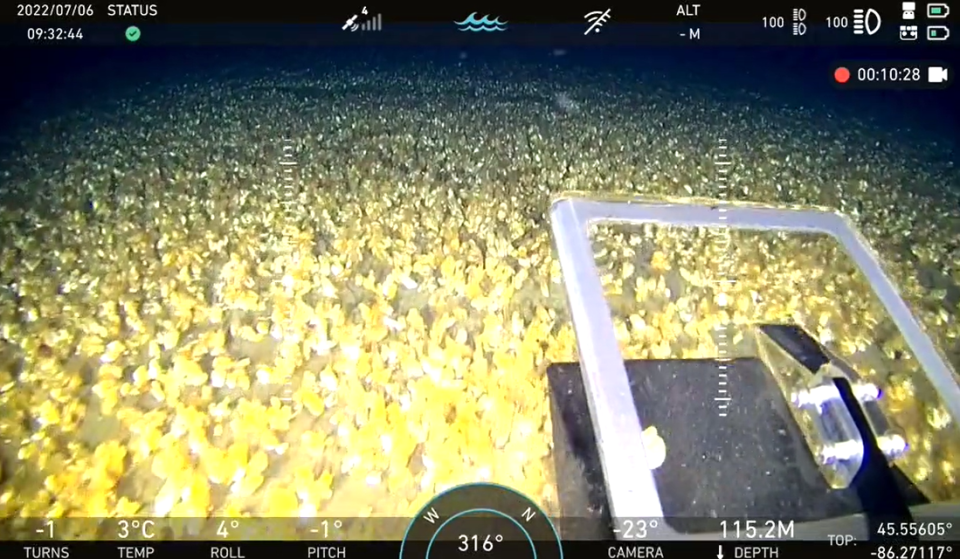Tribal research takes a deep dive into invasive species in Great Lakes
SAULT STE. MARIE — Thanks to a new deep water research program, the Sault Ste. Marie Tribe of Chippewa Indians is developing research on invasive species in the region.
Fishing is a key part of the tribe's culture, and is an important economic industry for the Upper Peninsula in general. Sault Tribe fisheries has partnered with the Great Lakes Restoration Initiative to help maintain healthy waters and fish population in the Great Lakes through a variety of projects.

The Sault Tribe fisheries has participated in projects ranging from breeding fish to researching local habitats. The fisheries operate one of the most extensive research programs in the Great Lakes.
One research project has led the tribe to documenting large populations of invasive species in Lake Michigan and other areas in the Great Lakes. Officials said the deep water research project advances research in several regards, but its main focus is to help maintain the population of chub fish and learn more about the invasive species that affect local fish populations.
In the 1960s, the chub fish was harvested regularly, producing more than 10 million pounds every year. Since then, the annual chub harvest has dropped considerably. Today, less than 40 thousand pounds of chub are harvested a year.
In the long term, the tribe's research will help to fight invasive species and help restore the populations of important local species, such as chub. Before any steps can be taken to make changes, however, officials said extensive research needs to be completed.
"The project starts with the idea in mind that you're thinking of reestablishing chub populations, but before you can even think about doing that you have to start where we are starting now," said Amanda Stoneman, interim fisheries director for the Sault Tribe. "Right now, the goal is to see what do the fish communities look like in deep water in Lake Michigan and Lake Huron."
Research is done through several methods, including studying habitats and using nets to catch fish and study their health and diet. One aspect of the research includes the use of a remotely operated underwater vehicle (ROV).
The drone is capable of diving over 600 feet and can collect samples and video from the bottom of the lakes.

Subscribe: Get unlimited access to our coverage
Using the ROV, the deep water research program has found thousands of invasive quagga mussels covering the lake floor.
"It's able to take live video, which has shown that pretty much all of Lake Michigan, unless it is sand, is covered in invasive quagga mussels," said Stoneman. "We found blankets of them at more than 400 feet deep."
These invasive mussels are filter feeders, meaning they can draw plankton and other micro creatures out of the water for food, and they eat a lot of food. The invasive species are drawing so much energy and food out of the water that other fish populations are starving because of it.
A sign that there is a large amount of mussels in one area is clear lake water. While many people assume that clear water means it is healthy, it actually means that the lake is low in plankton and other micro organisms that feed fish.
While the program will eventually lead to action in helping native species, the research is still ongoing and could take several more years.
"Research leads to research. What we've found leads us to even more questions, like why are these invasive species in larger populations and deeper water in Lake Michigan than Lake Huron," said Stoneman. "At this point we're just collecting data to see where it leads us."
— Contact Brendan Wiesner: BWiesner@Sooeveningnews.com
This article originally appeared on The Sault News: Tribal research takes a deep dive into invasive species in Great Lakes

